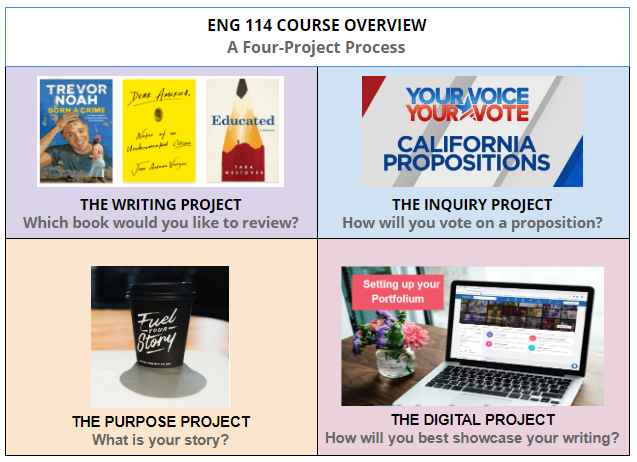Creating a vibrant community is always on my mind, so the very first thing I do on the first day of class is pass around a tray of cookies and ask students to talk about their favorite type of cookie. Immediately, the room is filled with surprise, smiles, and chatter. That is why I was stumped when a colleague asked, “What do we do on the first day of class on Zoom?” My impulse was to think about replicating those successful first-day activities, but what works face-to-face doesn’t necessarily translate well online. So, what should we do? To answer my colleague’s question, I write this article.
Before I share my four-step plan, each with a guiding principle followed by suggestions, I should note that I teach undergraduate writing classes at a four-year university, with a class size of 20-25 that meets biweekly for 75 minutes. While there’s no one right way to start the first day of class on Zoom, as this depends on the course level, size, and discipline, I believe the overall purpose of the first day is to establish a positive connection.
Step one: Create a good impression
We all know first impressions matter. Students will be forming impressions of us early on, and these impressions may be more important than what we do later in the course (Cavanagh, 2016).
To start, before the first meeting, post your bio (be intentional in what you want to convey and link your portfolio if you have one) and ask students to do the same. This will allow you and your students to see who is in the classroom community. Then, on the first day of class, enable “waiting room” on Zoom, and as students enter, greet them with a smile and welcome them by name. Once students are all in, guide them to select “gallery view” on their Zoom so everyone can see each other.
Next, begin the community building process by getting students to talk. Do a 15-second introduction, asking students to share something about themselves, preferably something low-stakes and relatable. (I will ask students how they would like to be addressed including preferred pronouns, where they’re zooming in from, and their favorite food, movie, or music.) Instead of calling on students, I’ll have each student who just finished sharing call on the next person. When everyone has had a turn, I’ll ask, “What do we have in common?” because seeing our commonalities can serve as a social glue for future class sessions.
Step two: Spotlight the course
Now, it’s time to set the tone for the course. Using a visual to accompany text or narration can have a positive effect on a student’s experience in online learning (Rademacher, 2019), so I suggest instead of using the syllabus to lead the course overview, create a visual aid (see my example below) to highlight the course structure, design, and assignments. Additionally, transparency and clarity are incredibly important, so be sure to cover the learning goals, how the assignments fit into those learning goals and contribute to students’ learning, and how students will receive feedback and be assessed. To activate prior knowledge, assign students to read the syllabus before the first meeting.

Step three: Generate guidelines
Zoom may be our “new normal,” so what desired behaviors or interactions do we want to see? These are Zoom norms, like classroom expectations. You could create a set of norms and convey those directly to students, or you could collaboratively generate them with students. I prefer the latter. Based on my teaching experience, students are more likely to remember and take ownership of what they create (in this case, Zoom norms).
To do this, activate your students’ metacognition. Ask them, “Based on your experience with online learning, what strategies have been effective or ineffective? What behaviors should we establish in our class to promote a positive learning experience for oneself and others? Post your response to chat.” Then, ask students to read the responses in chat and find common themes. For example, students might point out that most people agree cameras should be optional, questions should be relevant to the lesson, and so forth. These common themes, in turn, could become the norms. Limiting the number of norms to five or less and posting them on your campus learning management system (LMS) will make it easier for everyone to remember and follow through.
Step four: End the class on a positive note
Like first impressions, endings also matter. If students leave with a smile on their face, they’re more likely to come back for more.
One way to conclude is to showcase projects from former students who’ve taken the same class you’re teaching now (I will share a collaborative video, a research paper, and an infographic). As you present inspirational works, explain the goals (mine: audience, purpose, context), cover engaging qualities (mine: student choice, multimodality, meaningful assignments), and dive into the completion process (mine: a step-by-step approach and bite-size assignments that build toward a final product), this strategy not only highlights the value of your assignments but also helps generate curiosity early on. Also, make sure to invite students to comment and ask questions.
Another option is to share feedback from former students. What are some awesome things your students have said? For a visual appeal, showcase the feedback with speech bubbles and share how the feedback connects to specific assignments or your teaching philosophy. Also, this is an opportunity to de-stress students, emphasizing your flexibility and partnership in their learning process.
If none of these options seem feasible, you could end the class with a student questionnaire (here’s my example). Let students know you’re interested in building meaningful connections, and thus, would like to learn more about them as students and learners.
Have you already bubbled up first-day ideas for Zoom? Please share them in the comments. I look forward to learning from you.
Crystal O. Wong, EdD, grew up in San Francisco, California. Dr. Wong began her teaching career in the San Francisco Unified School District as a K-5 music, literacy, and classroom teacher, where she taught for five years before starting a second career at San Francisco State University, where she has been teaching composition for 13 years in the writing program. She is also a Faculty Fellow on Reflective Practices in the Center for Equity and Excellence in Teaching and Learning (CEETL) at SF State.
References
Cavanagh, Sarah Rose. The spark of learning: Energizing the college classroom with the science of emotion. West Virginia University Press, 2016.
Rademacher, Craig. “The Value of Images In Online Learning.” Campus Course Development and Training, May 13, 2019. http://blogs.oregonstate.edu/inspire/2019/05/13/the-value-of-images-in-online-learning/



